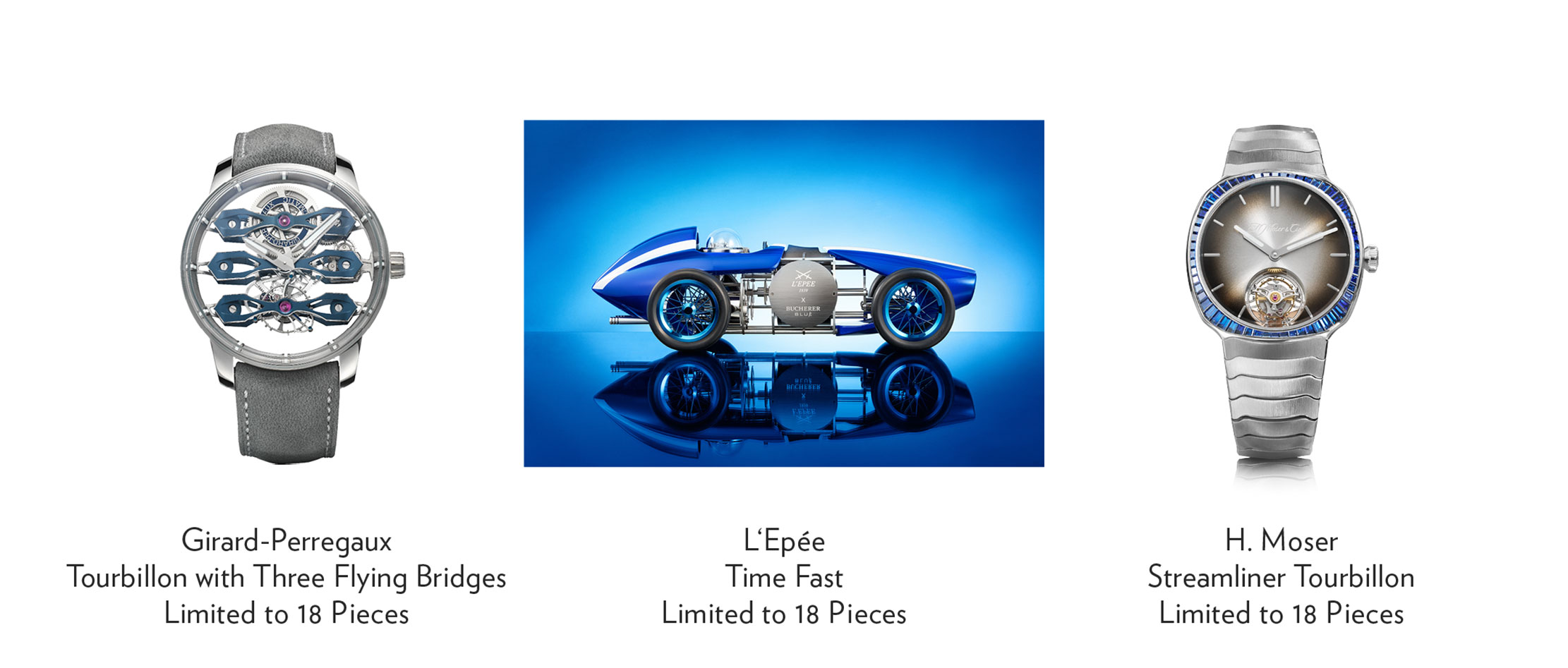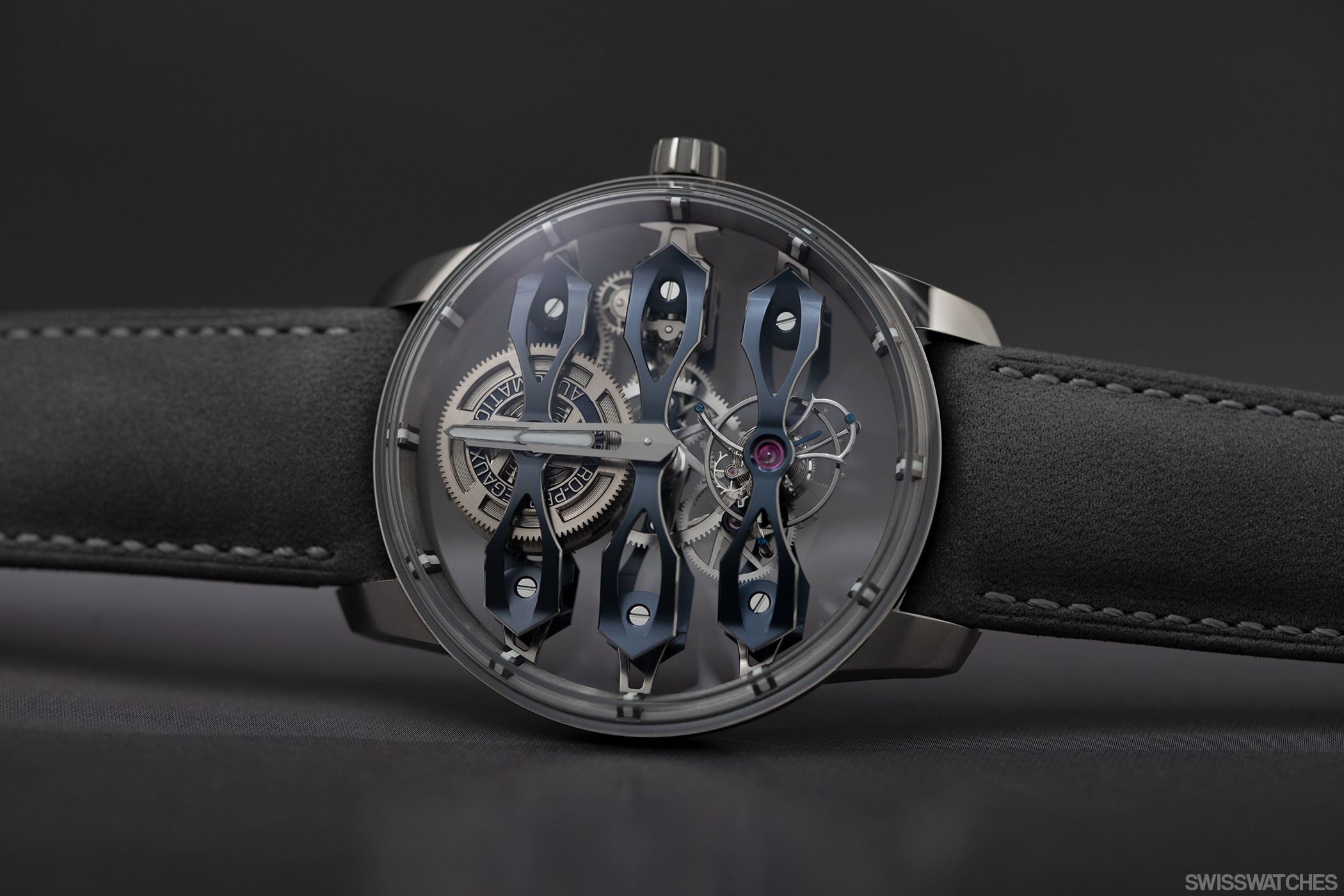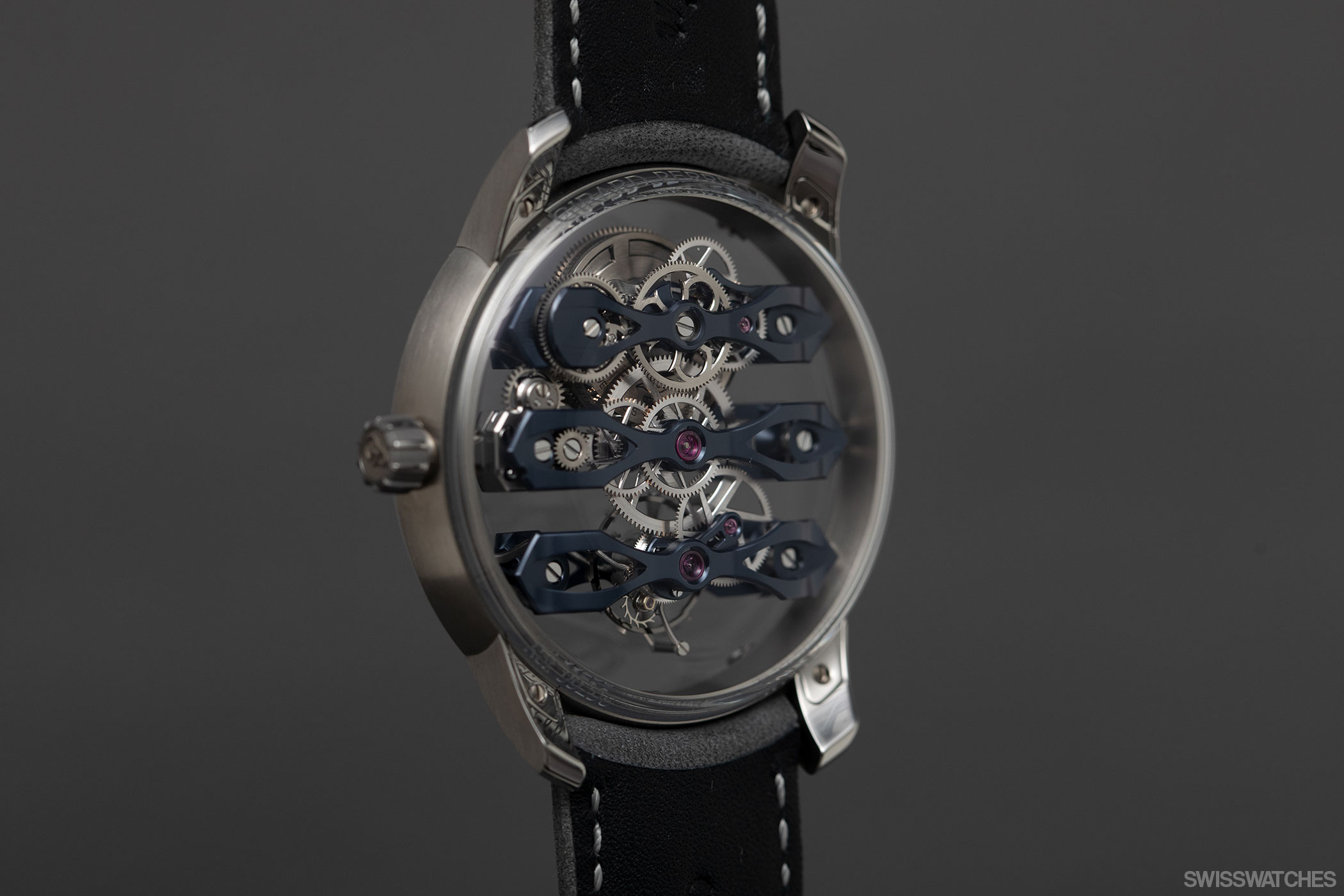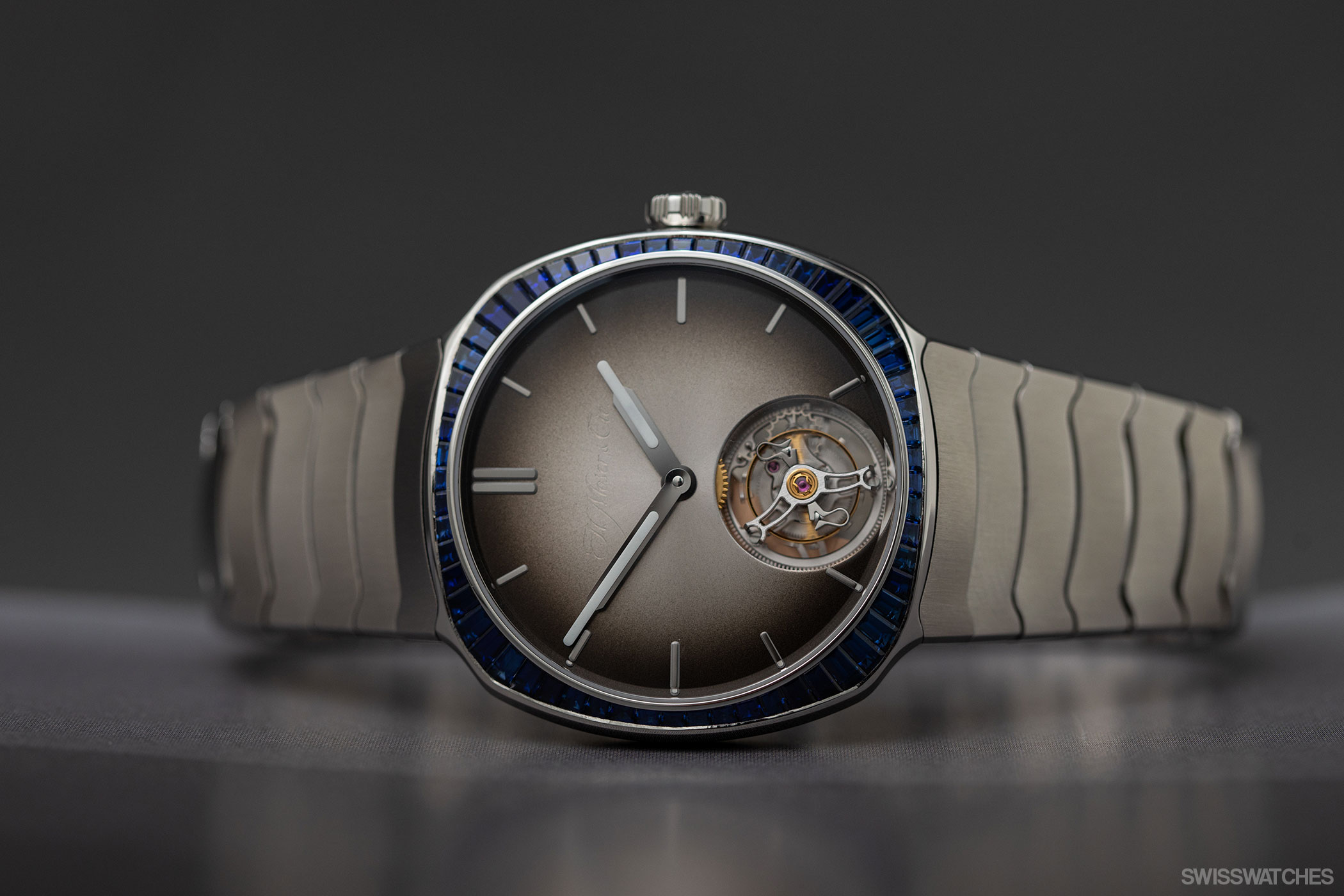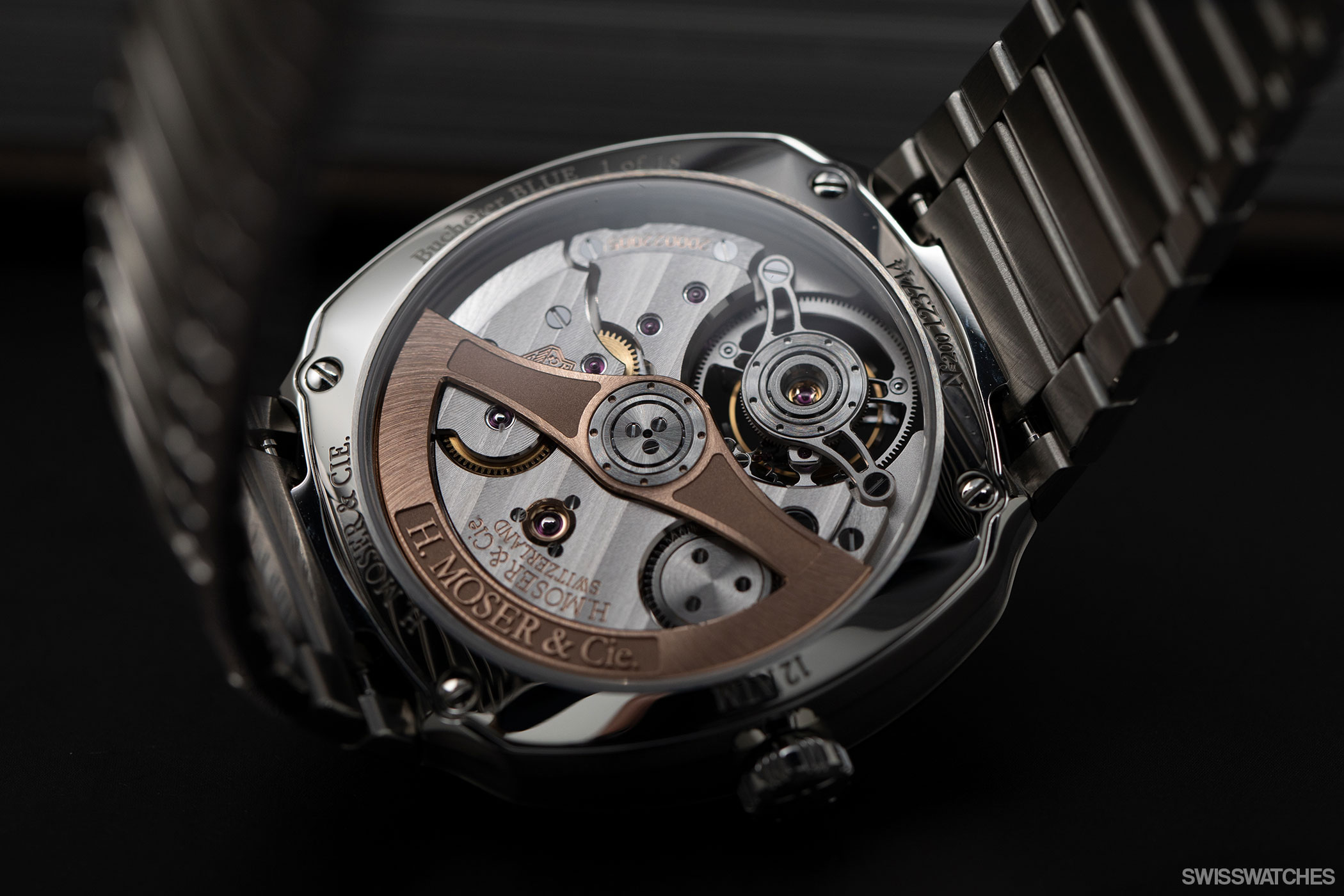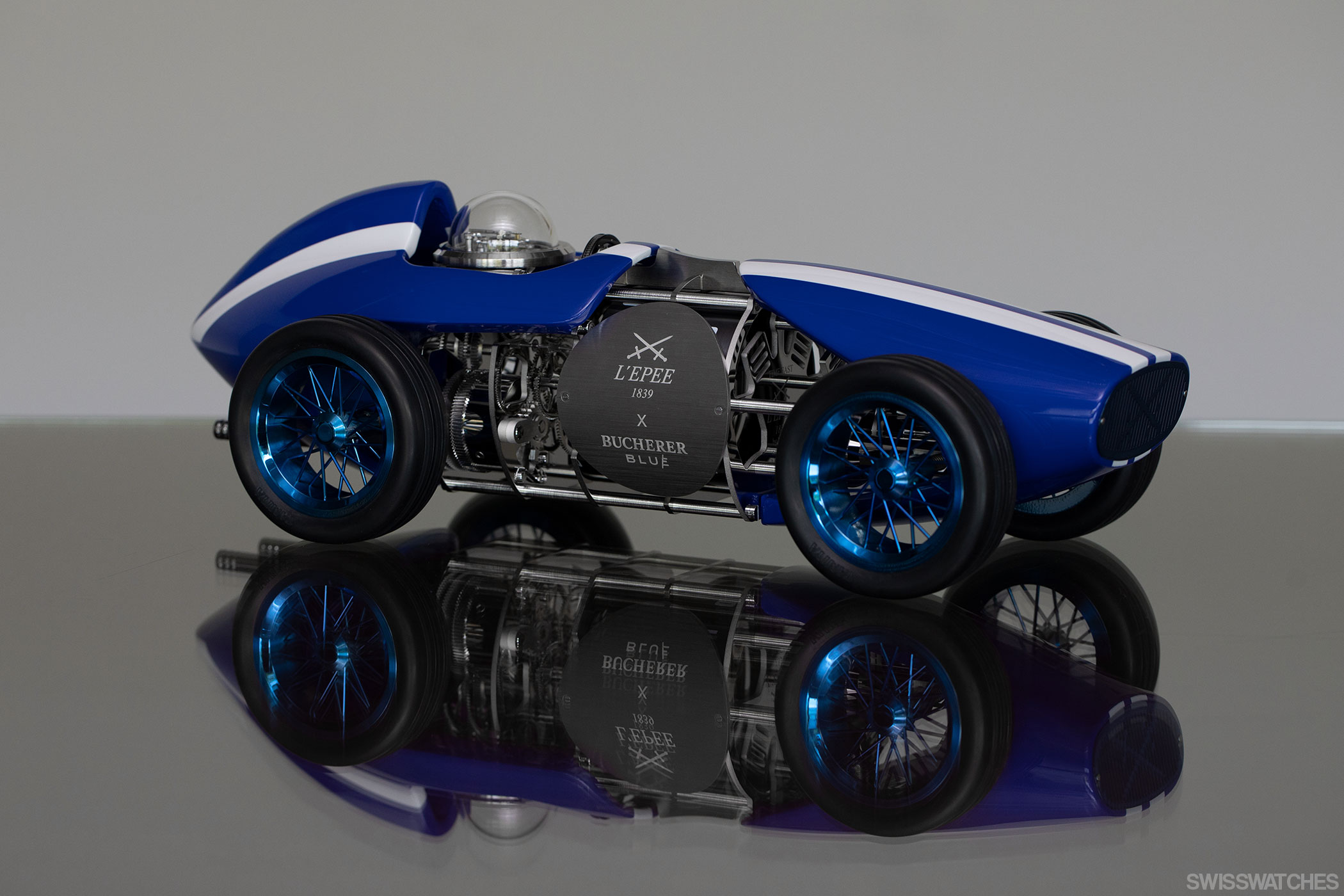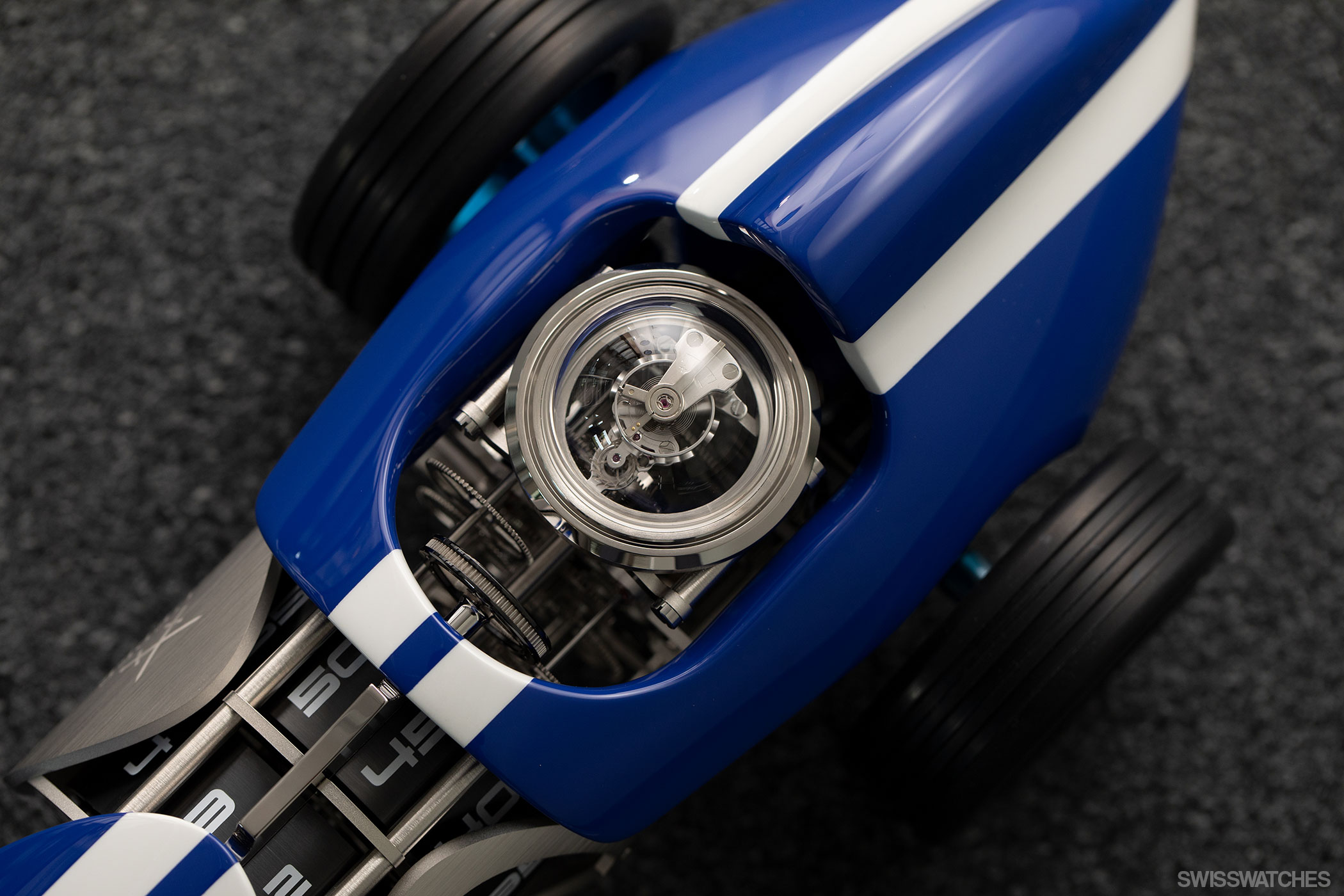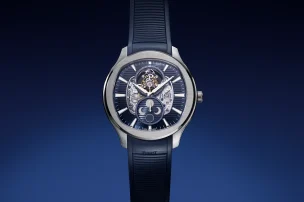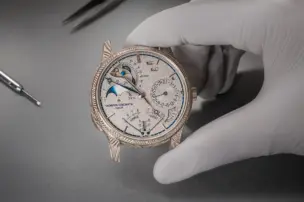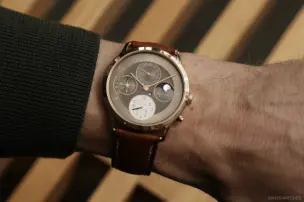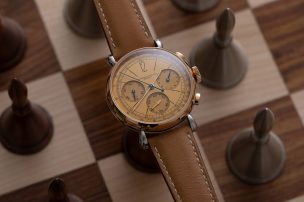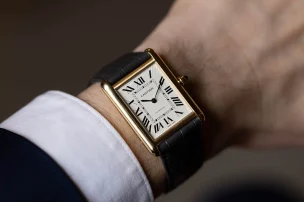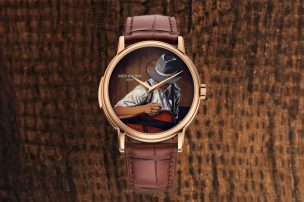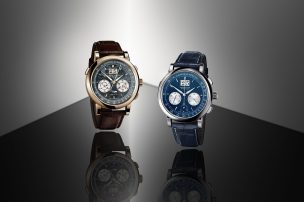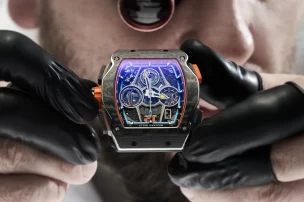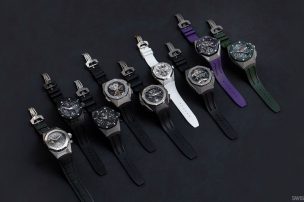
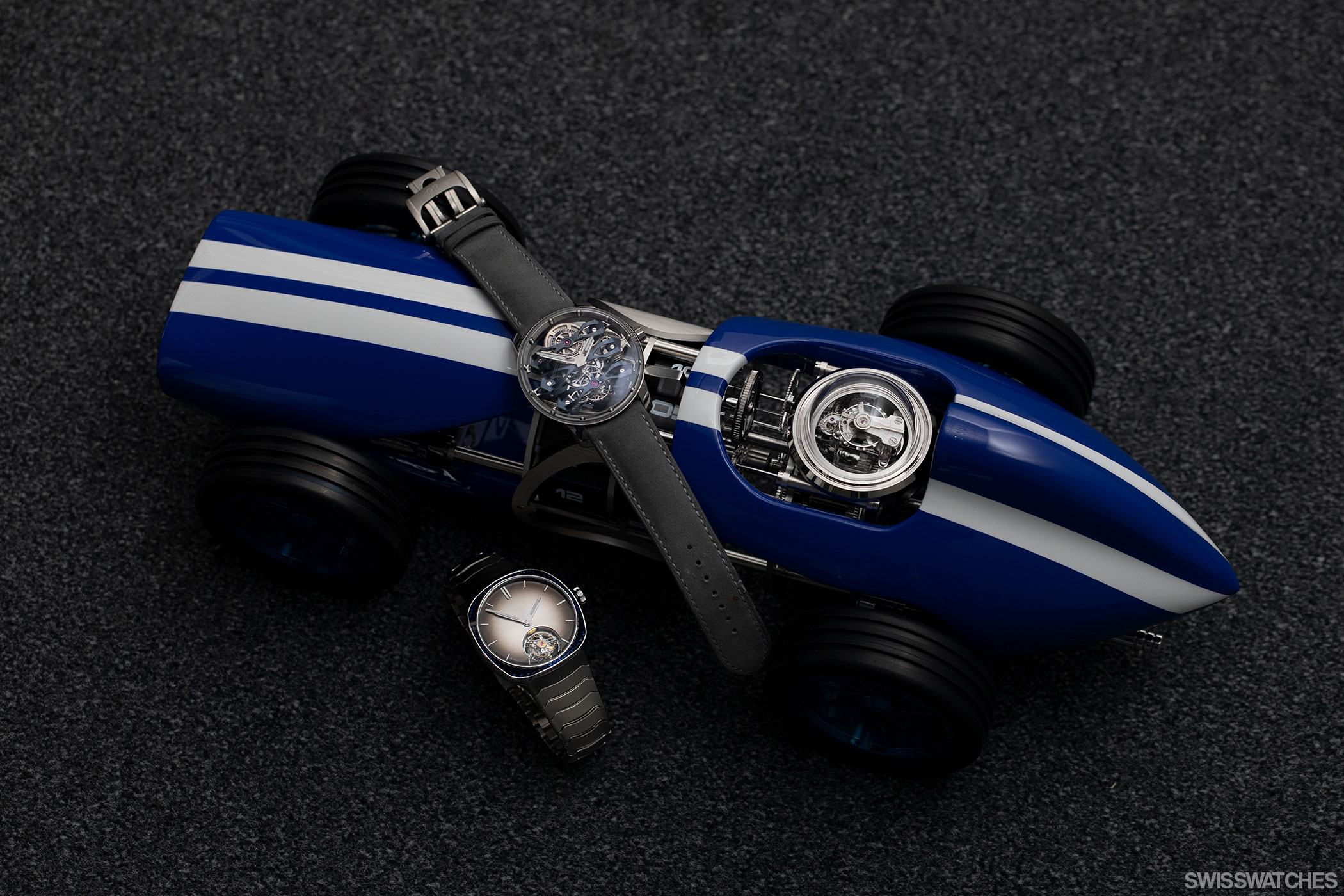
Beautiful in Blue: The Latest Limited Editions for Bucherer BLUE
It must be the power of strong brands and manufactures: a good 50 watches have already been created for and with Bucherer BLUE, which sees itself as the in-house innovation lab of Bucherer – one of the largest and most renowned watch and jewellery retailers in the world. All of its models are united by the use of the colour blue, yet its collaborations span across the board as brands such as Tudor, IWC Schaffhausen, Roger Dubuis and Audemars Piguet accommodate the most diverse desires of watch collectors.
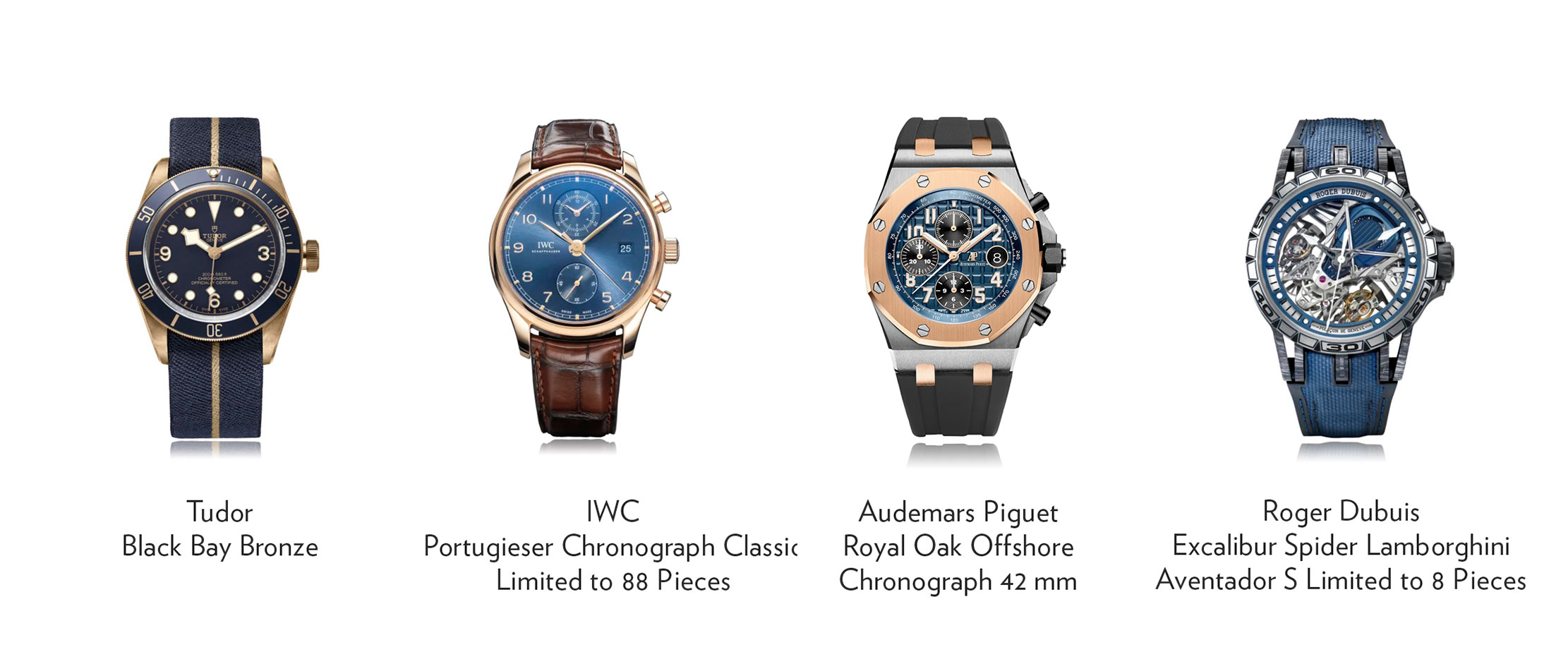
The three latest models are correspondingly distinctive, but nevertheless recognisable. Limited to only 18 pieces each, the three latest models to join the Bucherer BLUE bunch now count amongst the jeweller’s most exclusive collaborations. This includes a tourbillon with Girard-Perregaux, another with H. Moser & Cie, and a racing car sculpture with L’Epée 1839, the grand masters of table clock culture. The message is clear: Bucherer works only with the best in the business, producing pieces for the most discerning of watch collectors. Expectations are suitably high and continue to grow steadily, as the three newcomers demonstrate. Let’s see what this prestigious trio of high-end models is all about.
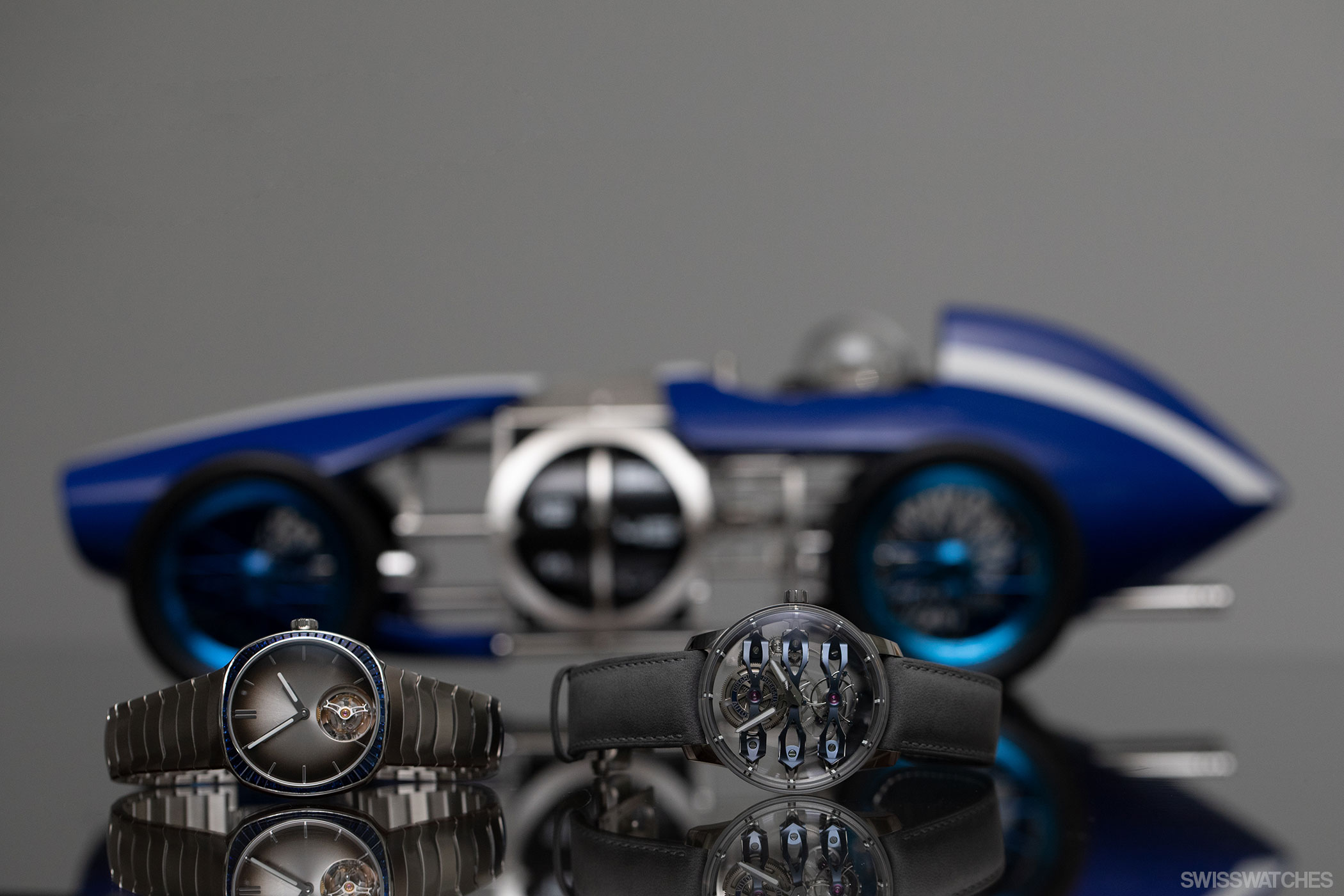
A classic in a new form:
The Tourbillon Three Flying Bridges Bucherer BLUE
There is horological commonplace belief that an outstanding watch is always more than just the sum of its parts. Rather, it conveys and forms a piece of history. It always reveals much more than just the time, telling of craftsmanship and the willingness to break new ground. All these factors are united in the first of this year’s three Bucherer BLUE novelties.
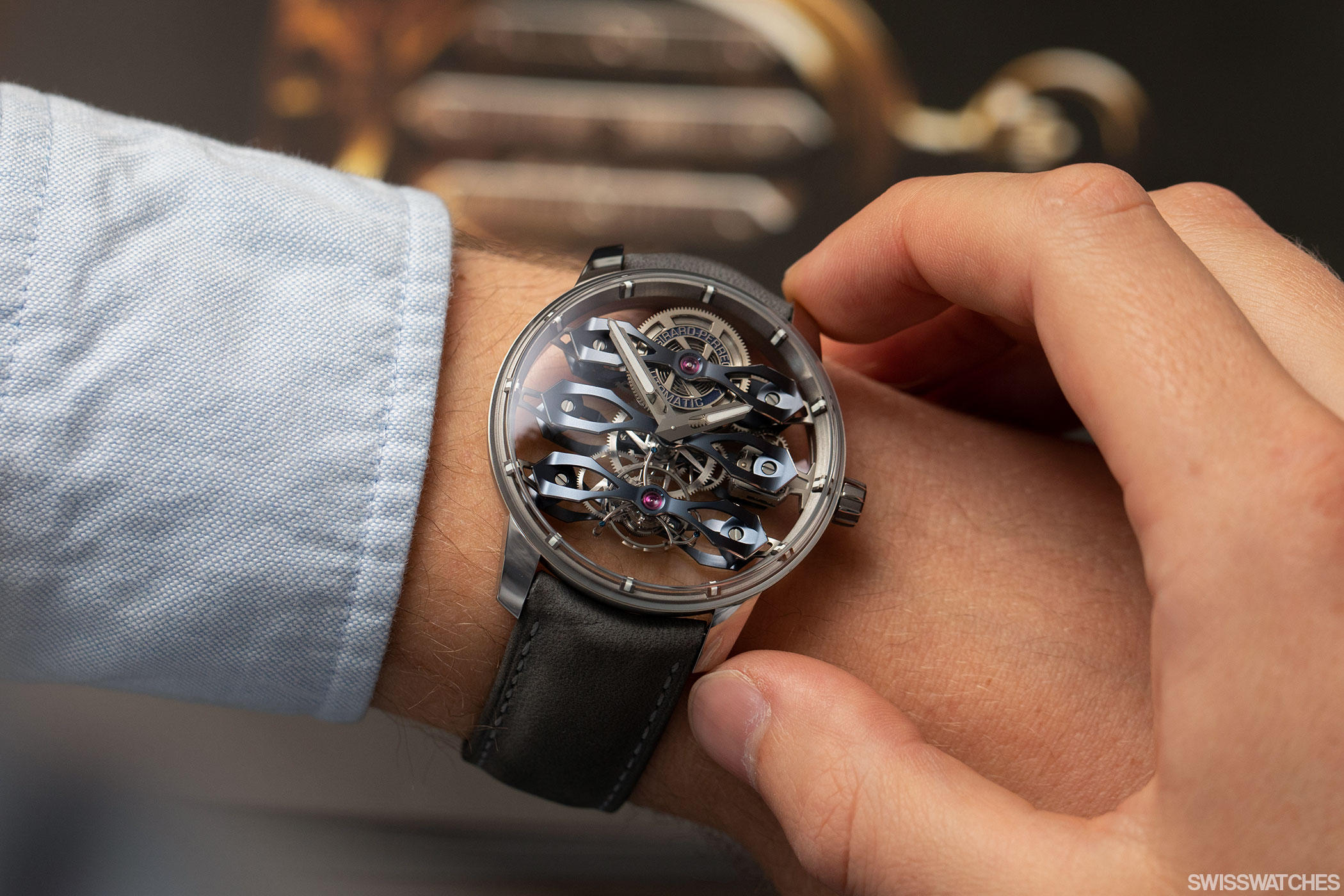
Constantin Girard presented his tourbillon with three bridges as early as 1867, very roughly the forerunner of the watch shown here. At that time, however, according to the spirit of the times, in came in the form of a pocket watch. Girard’s watch was anything but ordinary. The fact that the three bridges, mounted in parallel, were not concealed, but rather displayed as part of the dial, thus becoming a design element, was something of a revolution as it contradicted all rules of watchmaking at that time.
To this day, this horological stubbornness characterizes the aesthetics of the manufacture, the three bridges are part of the brand DNA, and the movement is considered the oldest calibre in the world still in production. No other model therefore represents the centuries-long tradition of the maison better than this one. The fact that this icon – after an initial successful collaboration with the skeletonized Laureato Absolute Light Bucherer BLUE last year – is now being issued jointly shows how highly the two housesinvolved value each other.
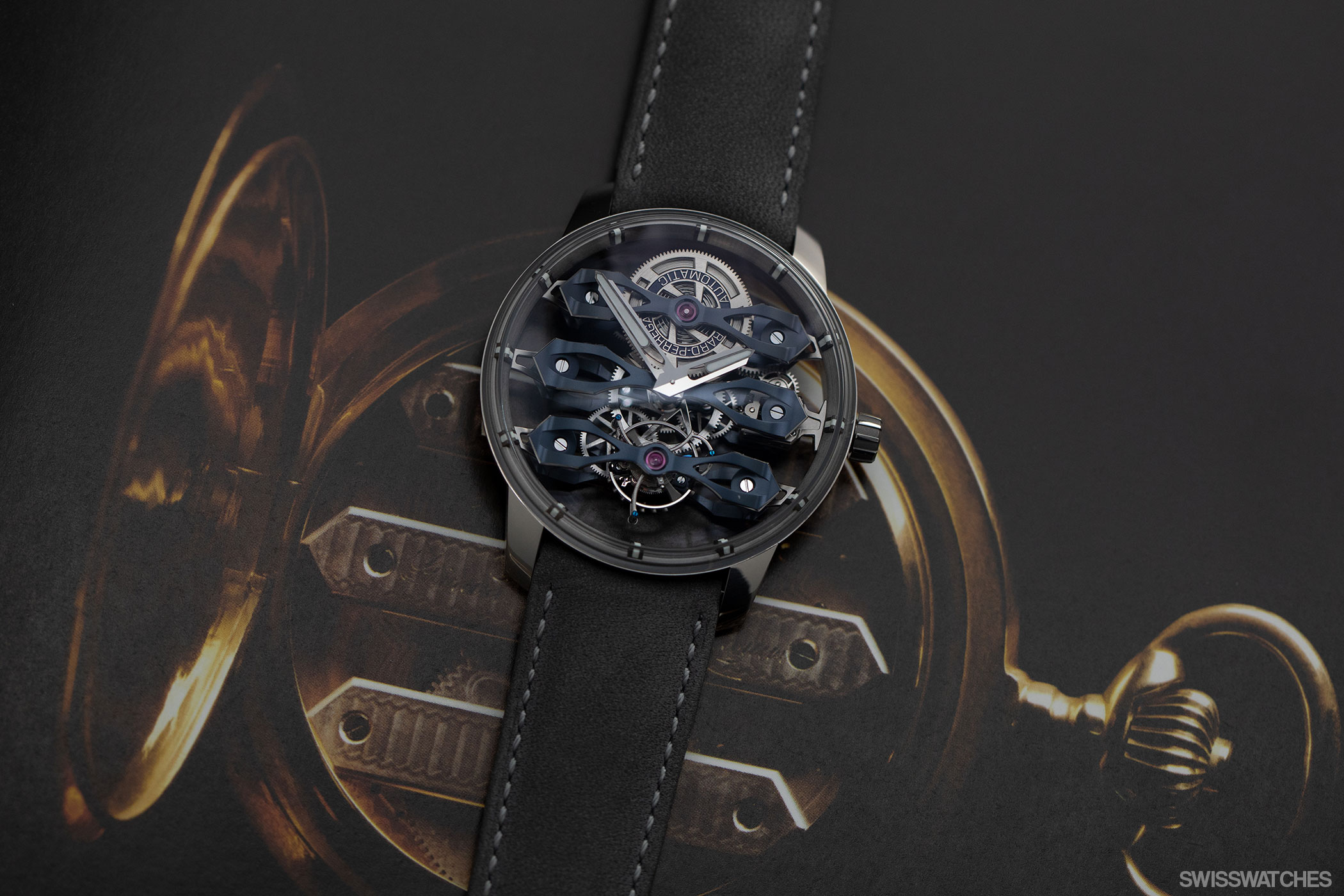
In the latest version, the Bucherer BLUE Tourbillon appears in what is probably in its most contemporary form to date. The skeletonised “Neo-Tourbillon” served as the basis for the limited edition. It is in the tradition of the first skeletonised three-bridge tourbillon from 1998, which was presented for the first time in 2018 in an even finer – because it appears even more light and floating – “Neo” skeleton variation with newly designed bridges.
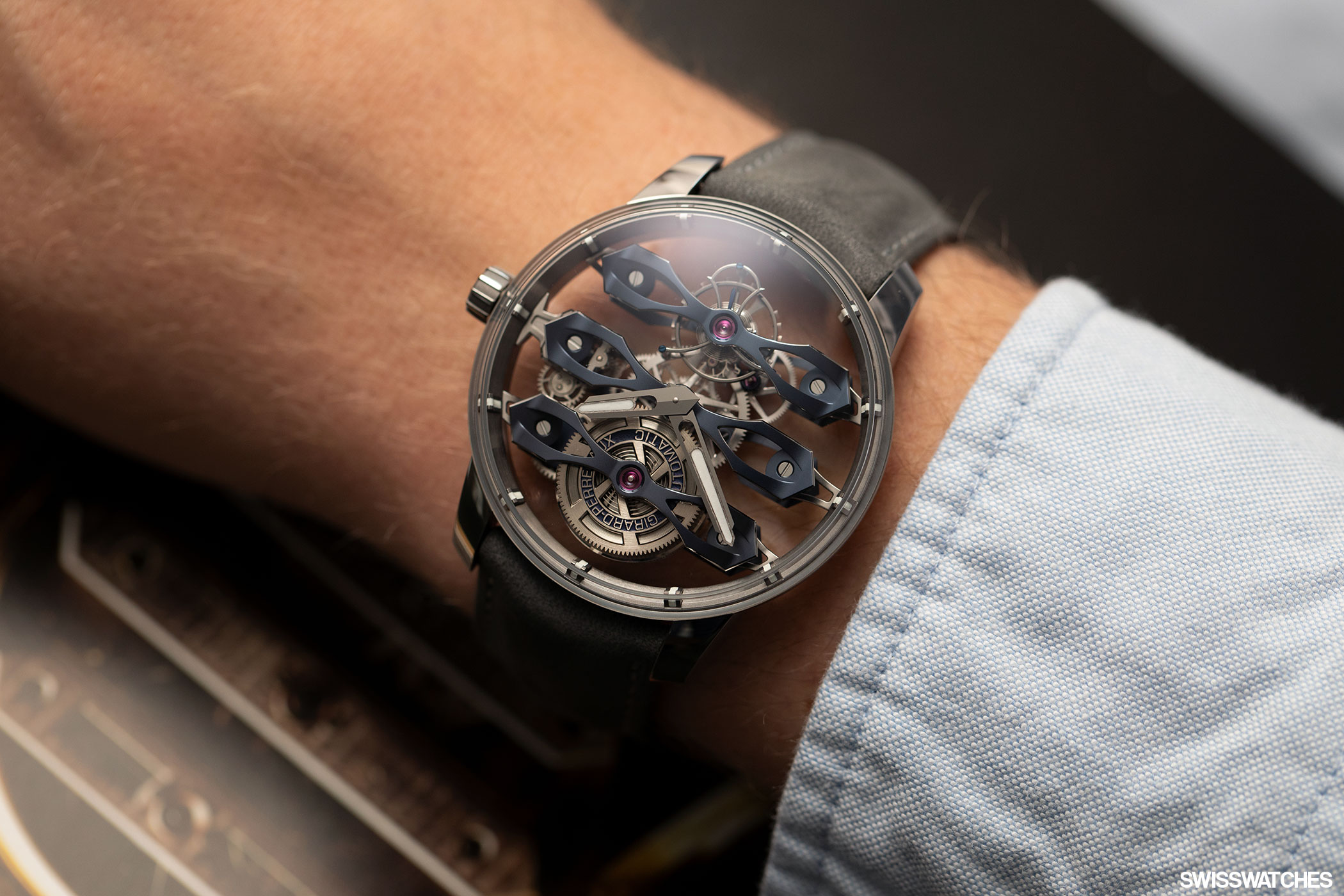
In the current model, the elements blend together particularly harmoniously. Its titanium case recedes almost completely into the background, serving primarily to provide a delicate frame for the sapphire crystal on the front and caseback, as well as the skeletonised movement. The mainspring barrel and tourbillon each occupy a bridge, with all three acting together as the movement plate. Thanks to this extra-delicate construction, the 44 mm diameter of the watch is hardly noticeable. Rather, the contrast of titanium case, titanium bridges, white gold micro-rotor and bright blue colour accents on the barrel and bridges creates a very successful balance of transparent and mechanical contrasts.
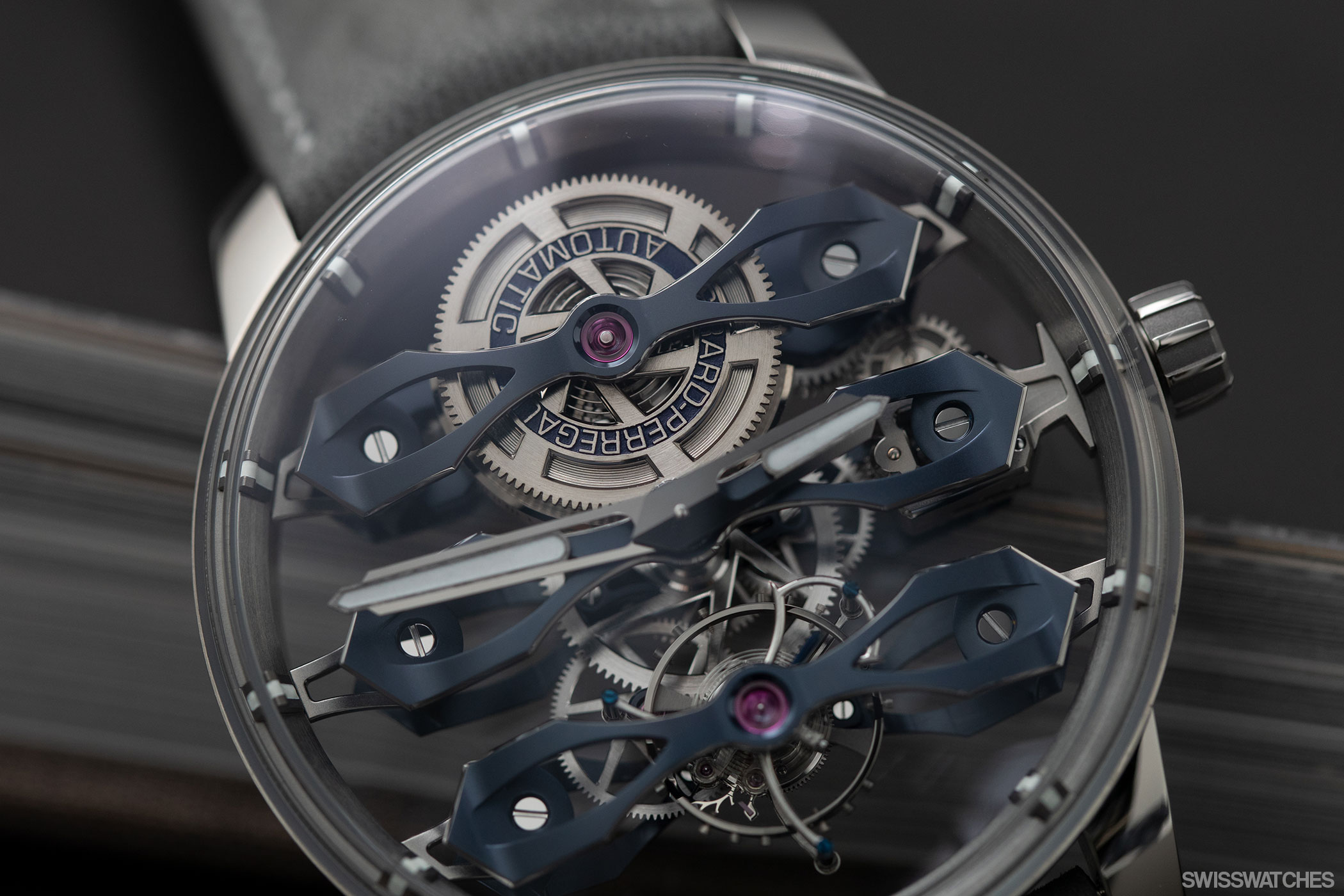
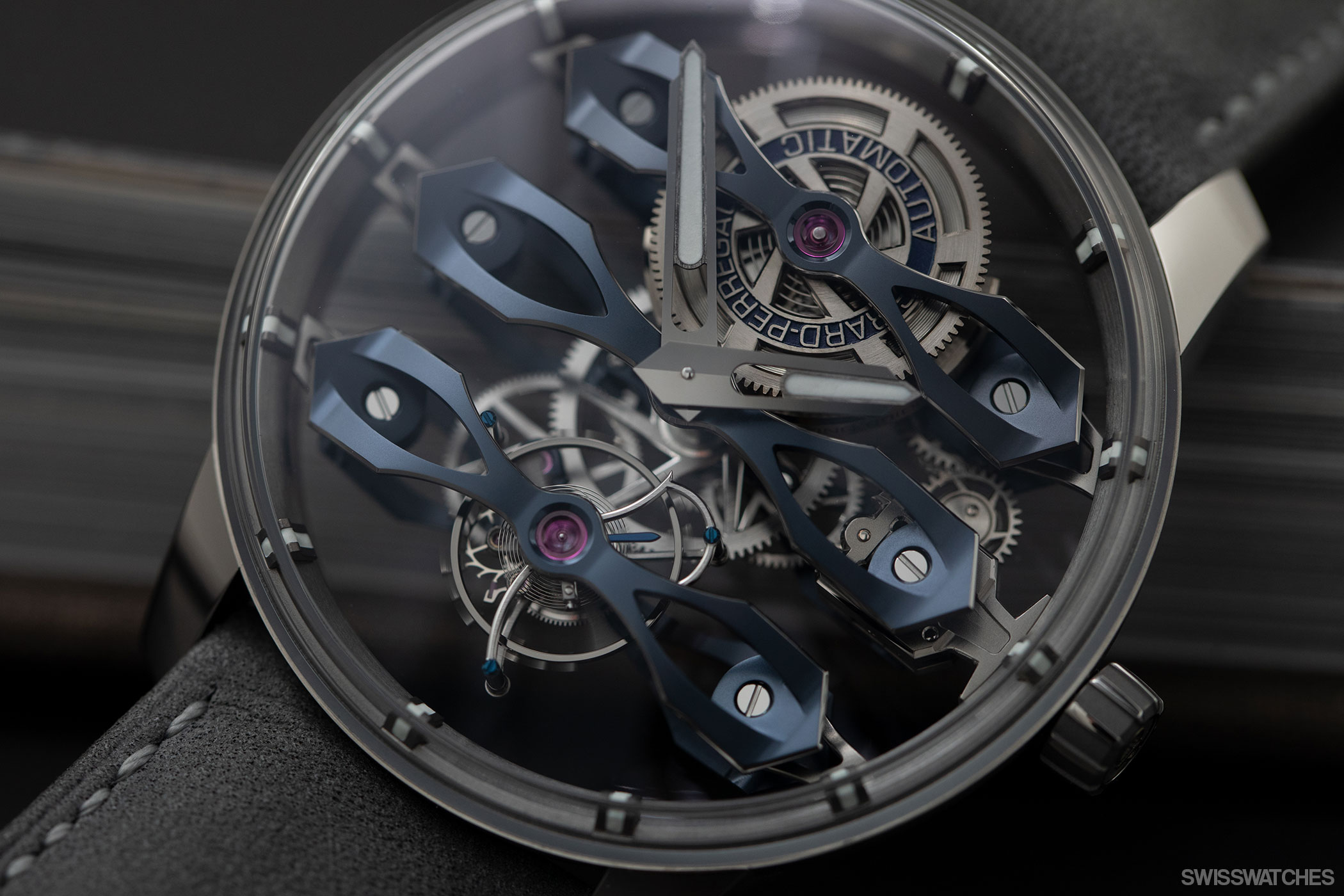
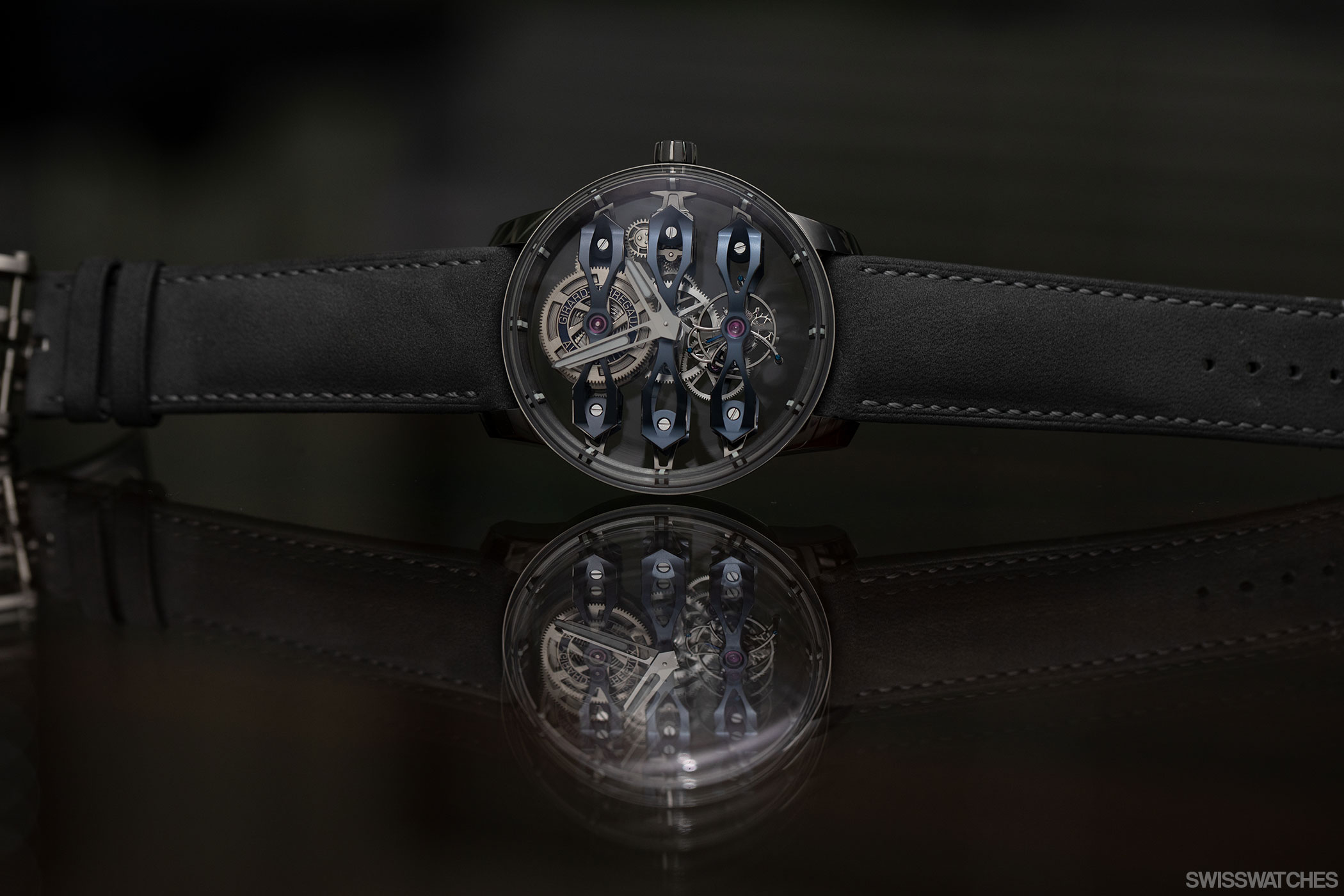
The edition is elegant and sporty at the same time. It allows for some in-depth insights into the watch, but does not appear for a second to be purely technology-driven. It seems light and airy without appearing fragile. Moving onto its performance, it offers a very respectable 60 hours of power reserve. It is a watch for collectors who have an appreciation for the very great stories of watchmaking but appreciate a modern appearance. It is fairly certain that this watch will delight connoisseurs at first, second, and third glance – and as a “conversation watch”, will liven up the quietest of rooms.
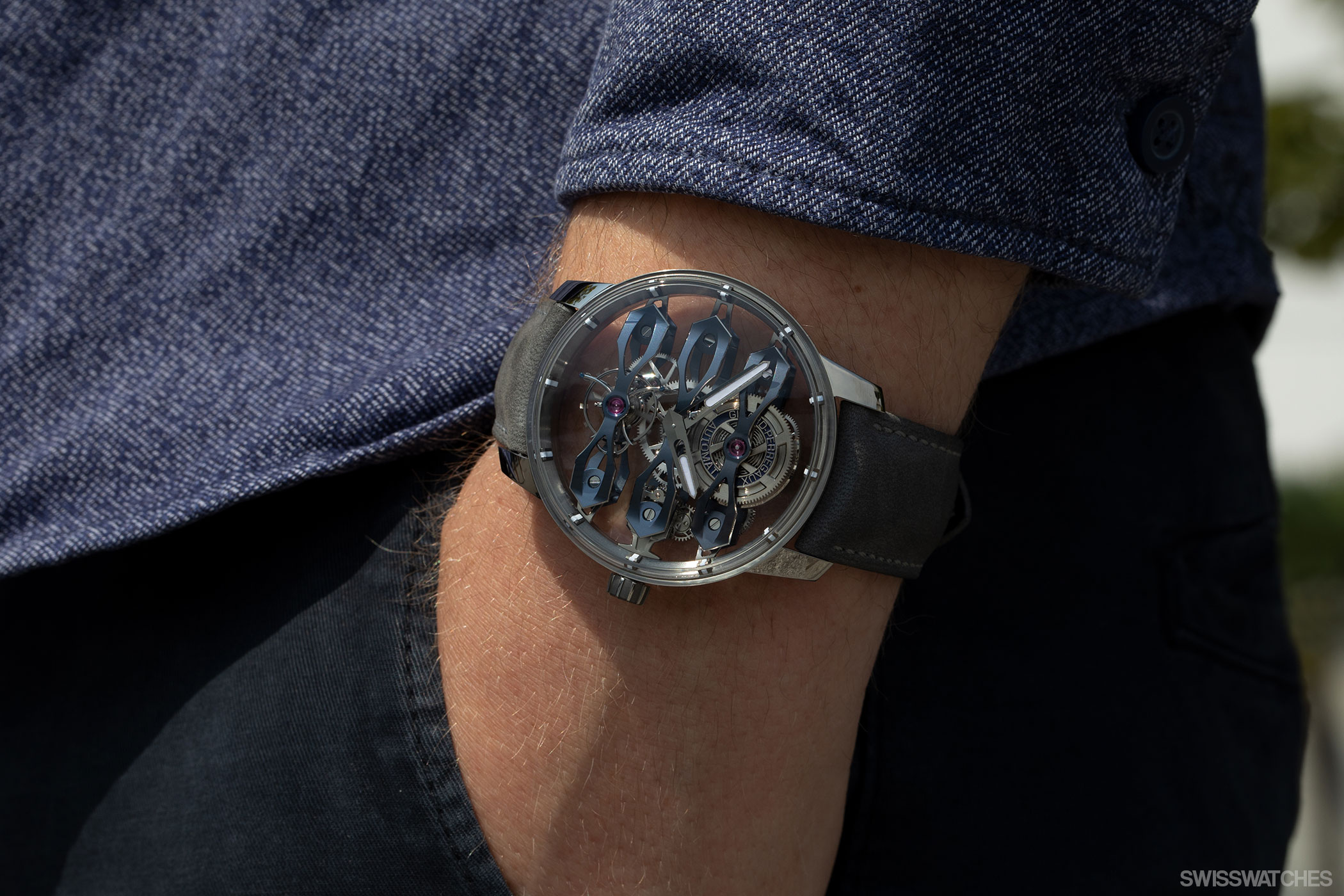
The price of a piece from this micro-series will be 166,000 euros in Germany.
Amassing the hype in dazzling form:
The H. Moser Streamliner Tourbillon Bucherer Blue
You need no crystal ball to predict that this piece will sell out very quickly. The 18 examples of the Bucherer BLUE Streamliner will find new owners very quickly. After all, the Streamliner collection is to H. Moser & Cie. what the Nautilus is to Patek Philippe: a sporty collection with a metal bracelet with great appeal, for which demand consistently exceeds supply. On top of that, the Schaffhausen manufacture, under the leadership of Edouard Meylan, cultivates a growing circle of collectors who are loyal to the maison.
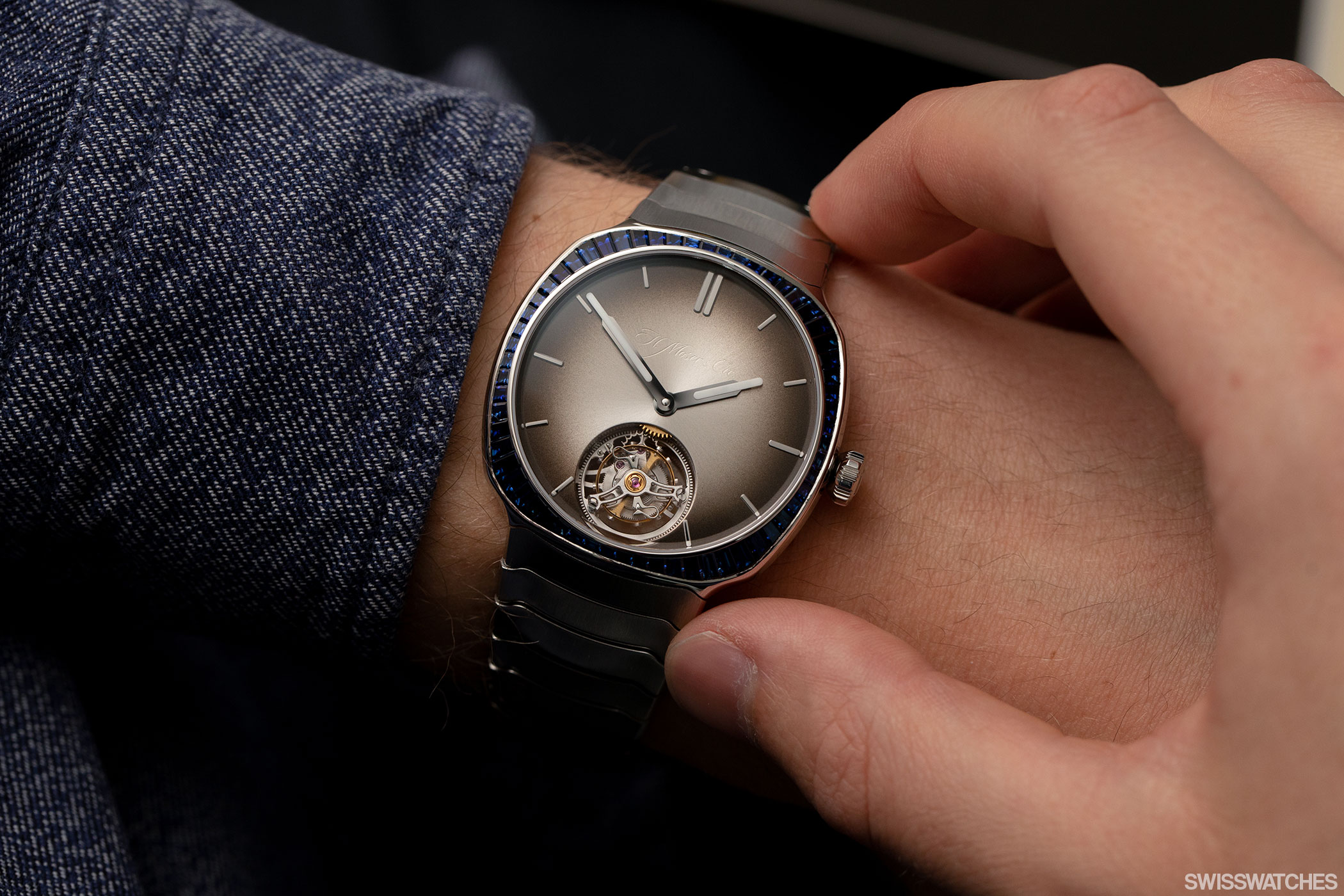
It is precisely this group that is likely to be most eager to buy the latest Streamliner, as it is an unusual model in several respects. Firstly, it is the first ever collaborative edition of a Streamliner. Secondly, it is the first steel Streamliner with an integrated tourbillon. This small cage with balance, escape wheel and anchor was invented to make the movement independent of the effects of gravity – and is considered the ultimate status complication. Until now, the tourbillon with the calibre HMC 804 could be found exclusively within the Streamliner collection in the recently introduced version in pink-gold with a Vantablack dial. Secondly, and perhaps even more specially, it is the first model in the collection to be set with precious stones upon its bezel. 60 baguette-cut blue sapphires, totalling 2.90 carats, adorn the 40 mm timepiece.
If you add together steel plus a tourbillon plus sapphires, the result of the calculation is a timepiece with maximum attention factor. After all, the competition with Gerald Genta icons usually uses precious metals in their collections for tourbillons, and especially for precious stones. That a steel Streamliner now gets the bling factor is therefore definitely a statement. It certainly gives the model a completely new appearance, and the task to set the bezel of this watch with precious stones must have been a great challenge. After all, it is the simple, flowing shapes and transitions from case to bracelet that have made the Streamliner so popular. This soft, flattering aesthetic is broken up by the sapphires, while the cushion-shaped case requires the setting of stones in very different formats.
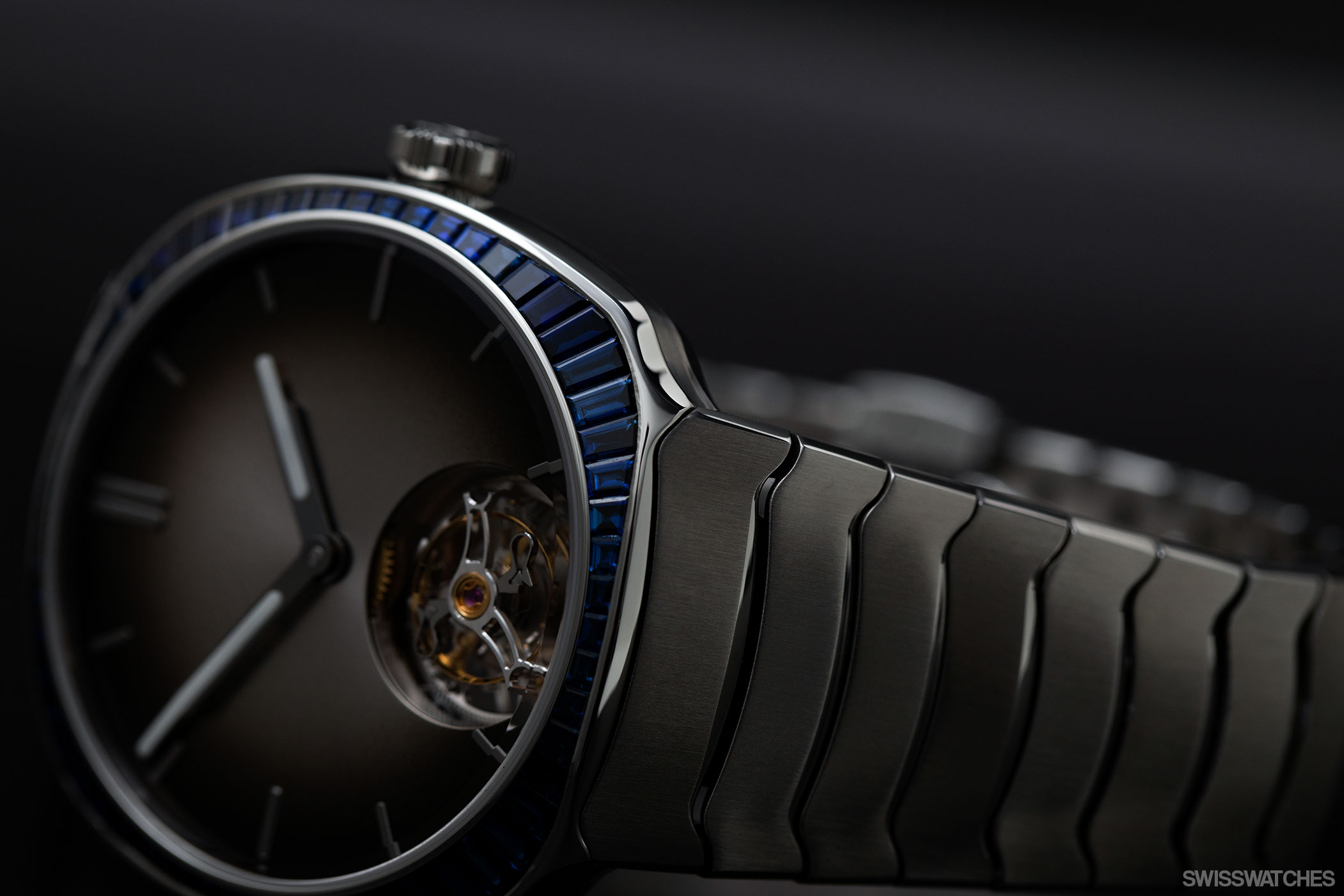
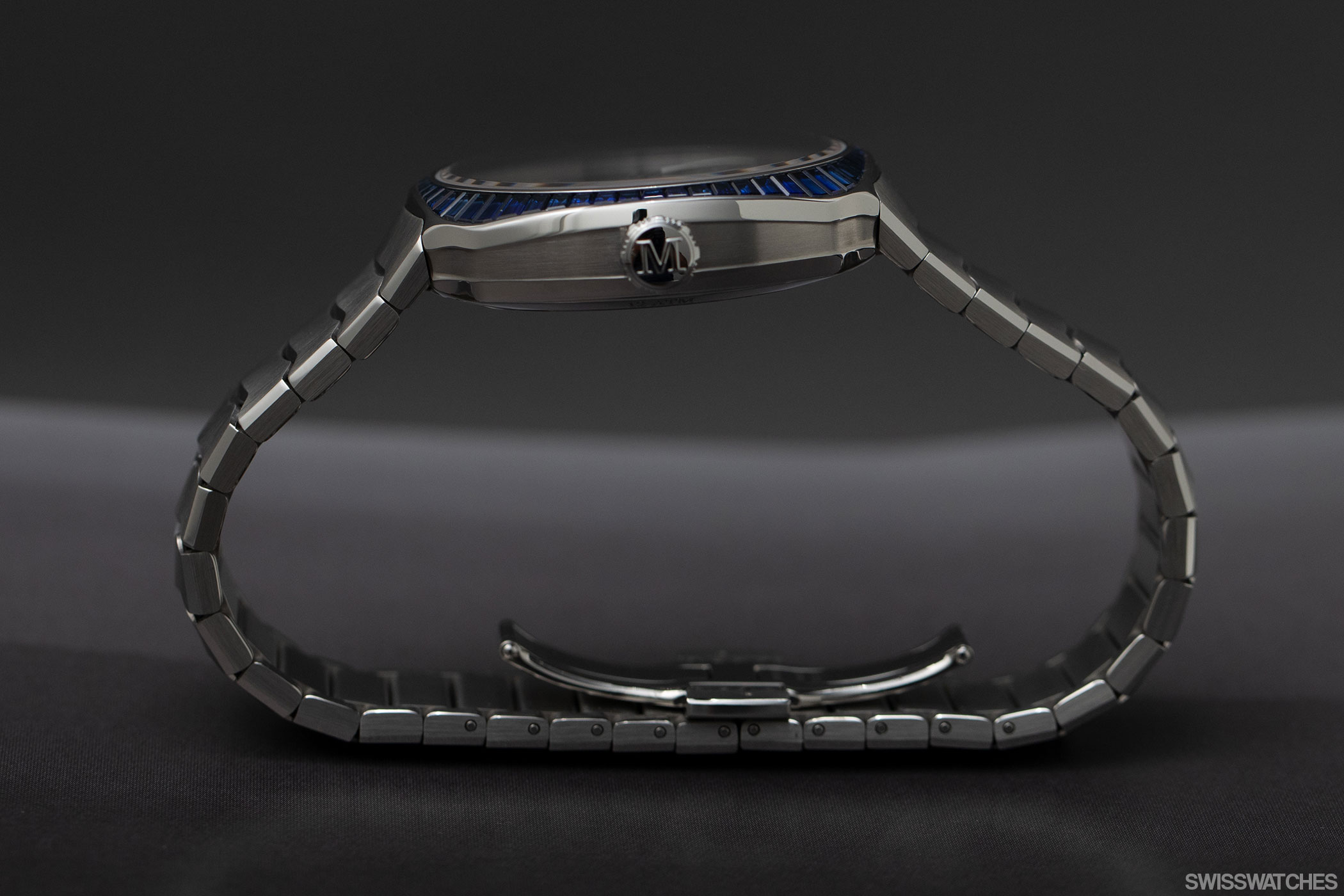
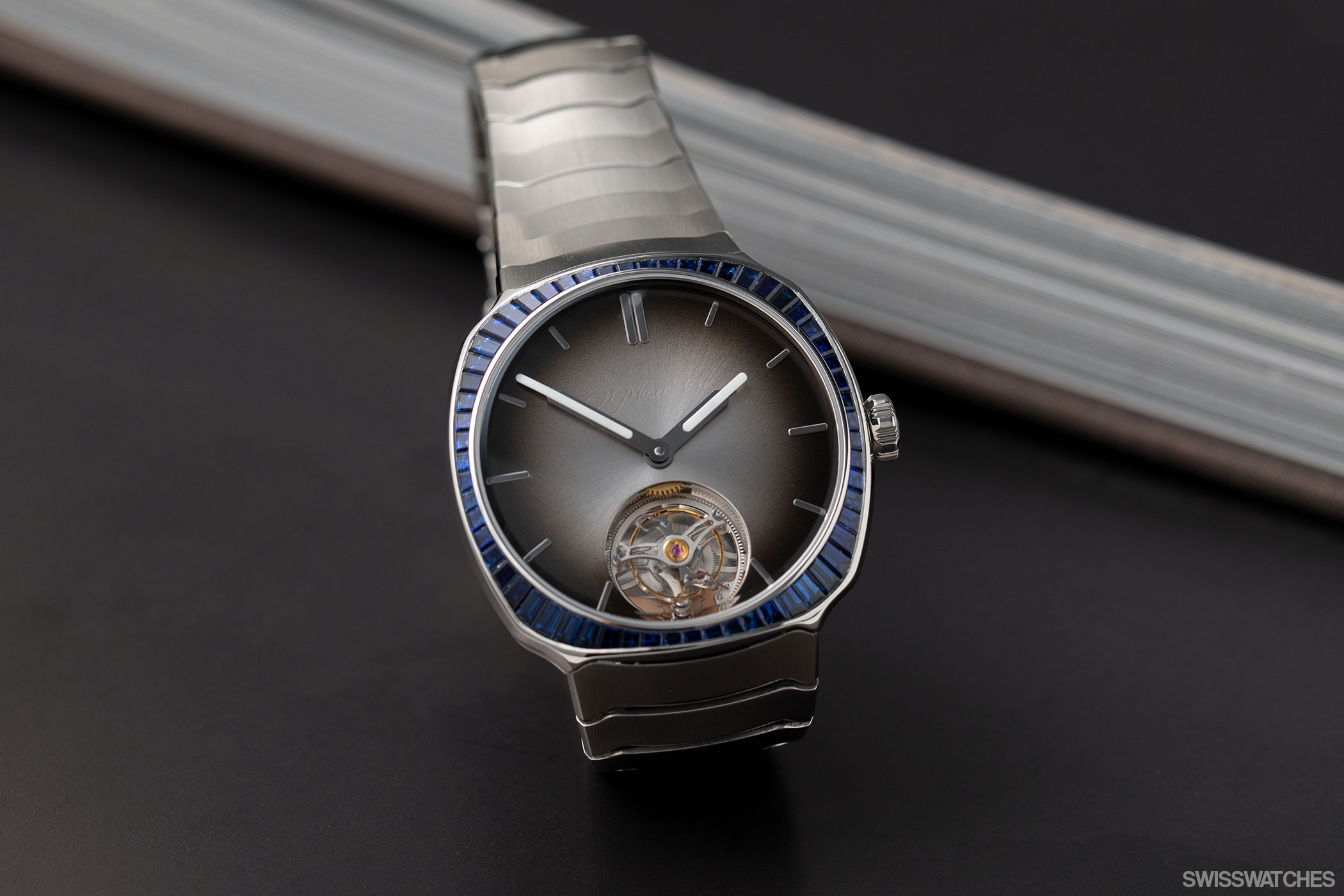
Sapphires and the Moser-typical fumé dial thus vie for the viewer’s attention, giving the Streamliner Bucherer BLUE an effect all its own – starker and somewhat away from the 70’s style of the original Streamliner, moving towards the zeitgeist of the 21st century. A 126,000-euro statement that marks its owner as a member of the innermost H. Moser & Cie. circle. With its brand motto “Very Rare,” the manufacture famously likes to emphasize how very rare its timepieces are – rarely has that rung more true than with this Streamliner.
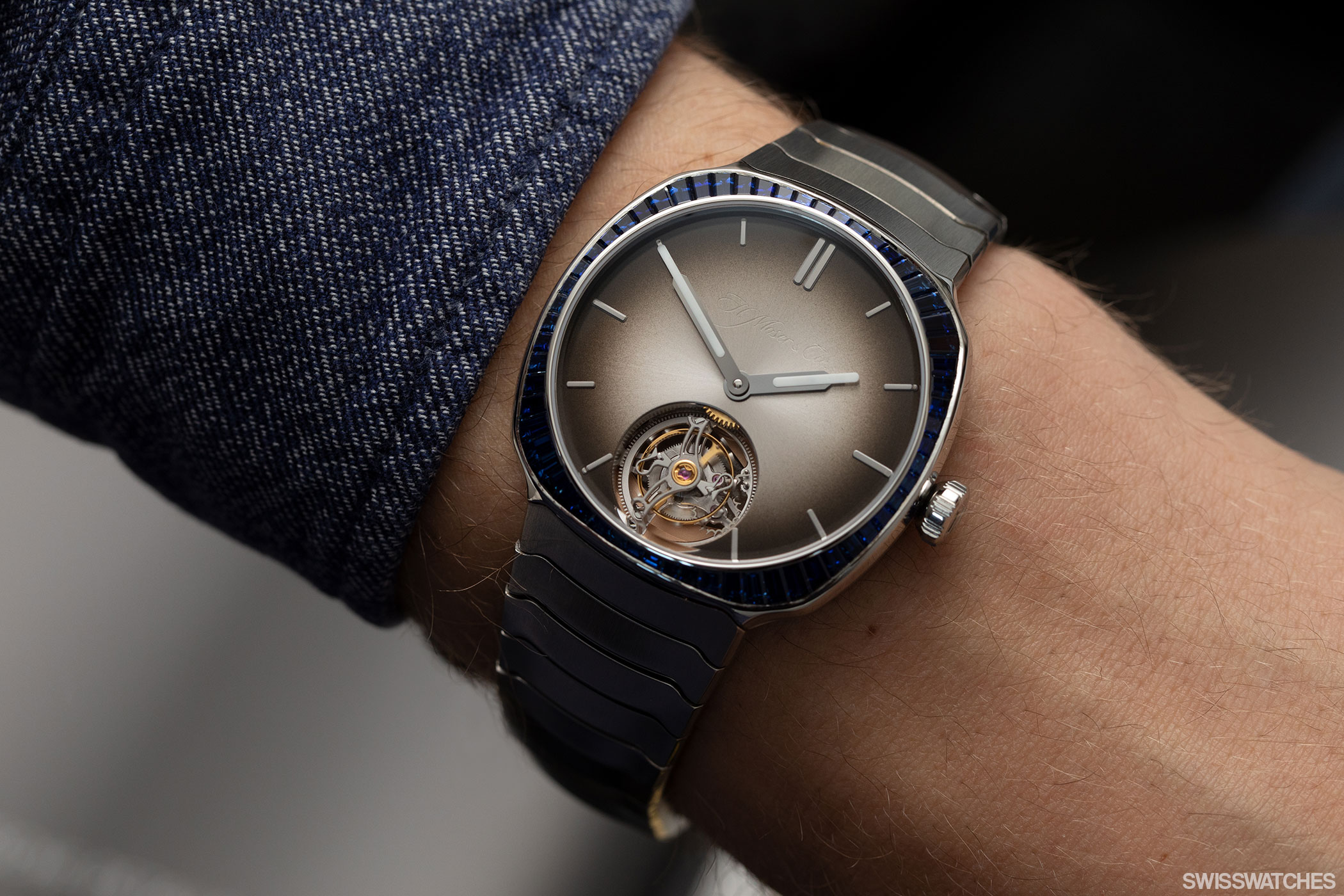
For the child within the collector:
The L’Epée 1839 Time Fast Bucherer BLUE
In the midst of all these beautiful wristwatches, we must not forget that watchmaking knows many an exciting form of play. One of them is L’Epée 1839, once founded as a manufacturer of classic table, game and travel clocks, and famous today for its unusual and playful horological projects, including the “T-Rex” table clock inspired by dinosaurs and created with MB&F, or the “Hot Balloon”. As childish as the names may sound at first glance, the expertise at L’Epée 1839 is to be taken seriously.
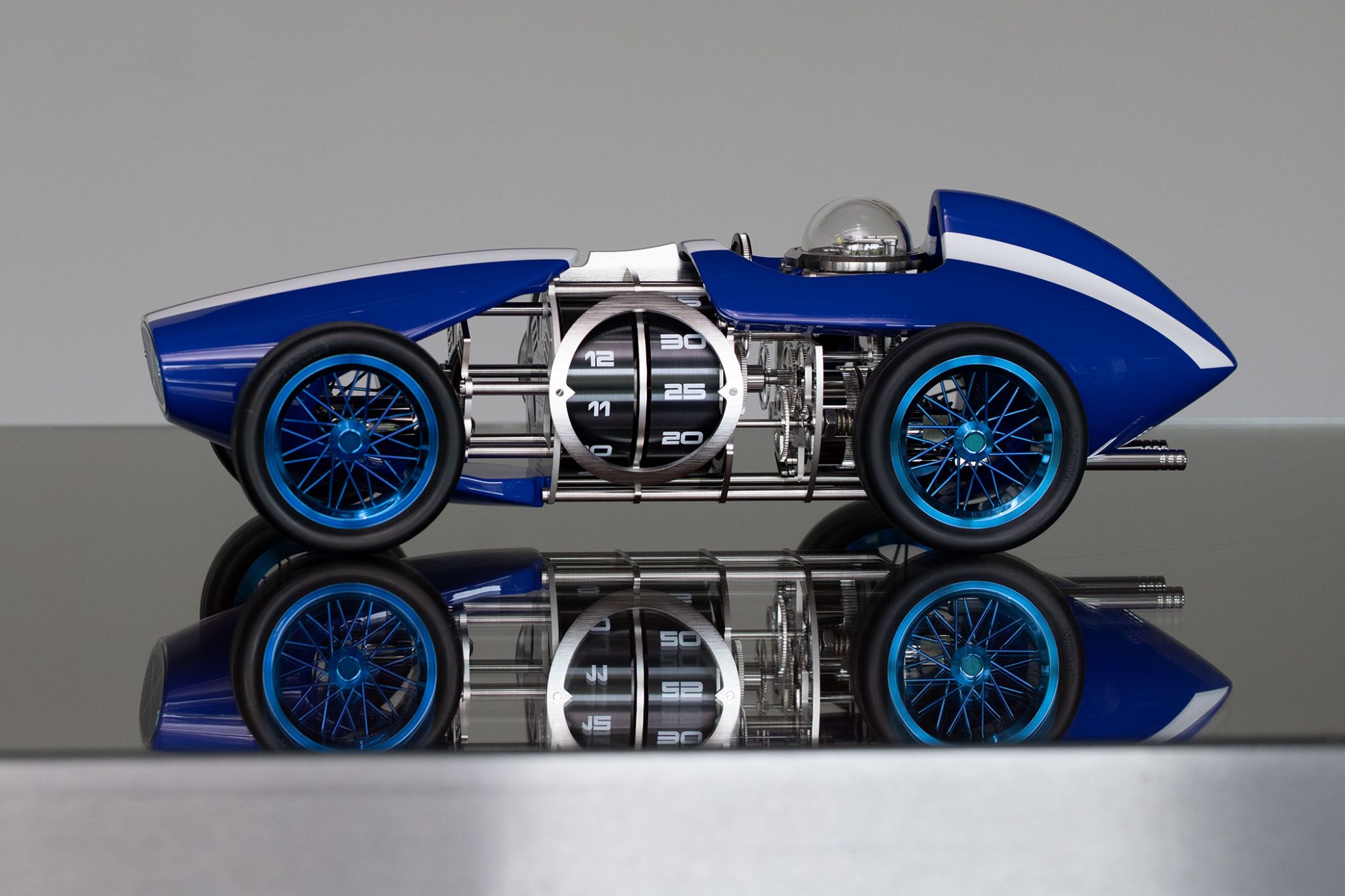
Such is the case with the newly presented Time Fast Bucherer BLUE. The Time Fast kinetic race car sculpture is already almost a classic of the maison, having been presented in different colour variations over the years, from chrome, green, and red to a well-known edition in a different, darker shade of blue with white stripes.
Visually, the time machine is reminiscent of the racing cars of the 1950s, but at almost 40 cm long it is anything but a toy car – and not just because it weighs almost five kilos. Rather, the engine is a graduated movement with a power reserve of eight days, and instead of a driver’s helmet, one must peer into the cockpit in order to view the glass dome, which in turn presents the escapement and regulation underneath.
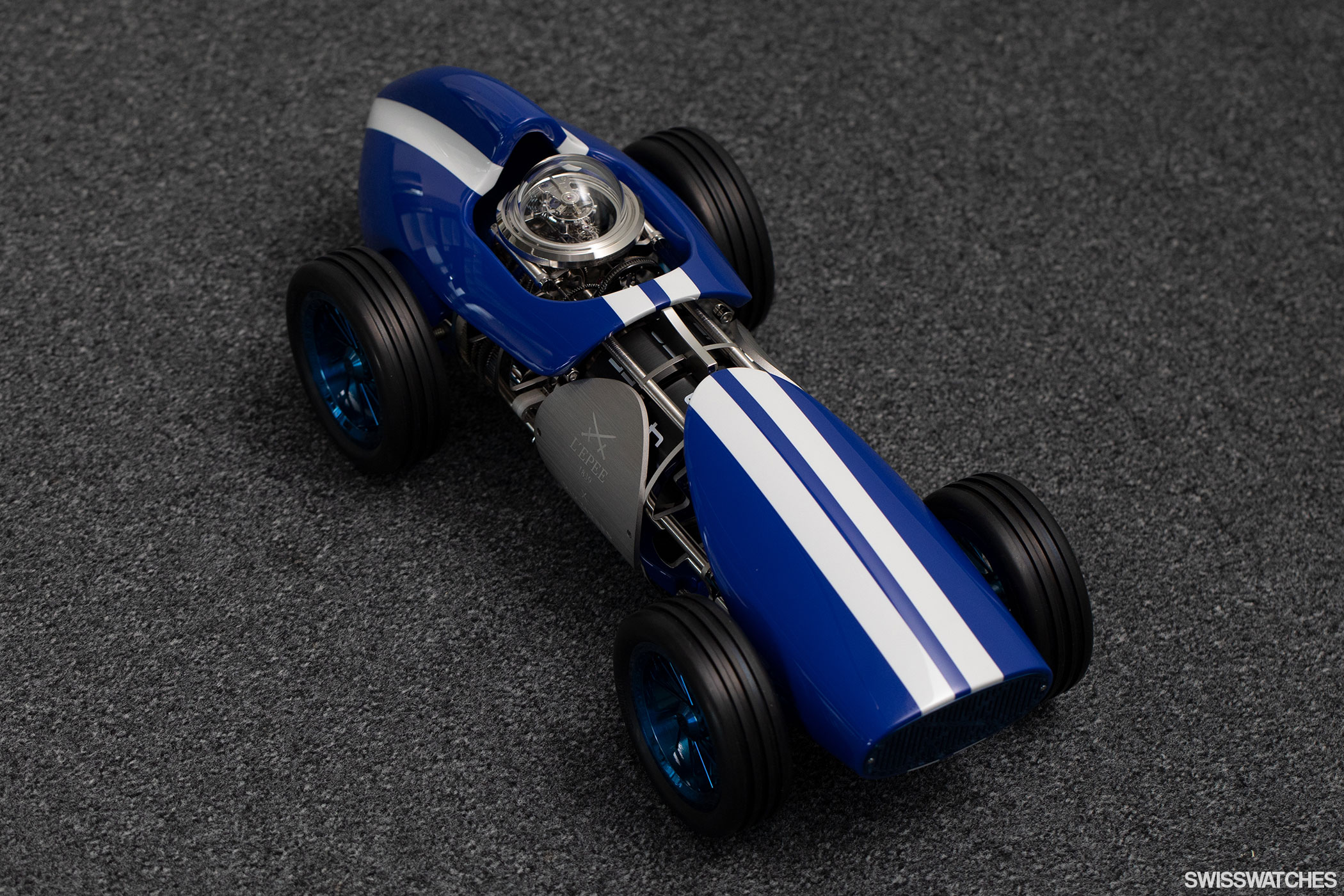
The display of the time is particularly charming. It can be found on the left side of the chassis, where usually the start number can be seen on racing cars. On the Time Fast, however, the time is displayed here with the help of two stainless-steel discs.
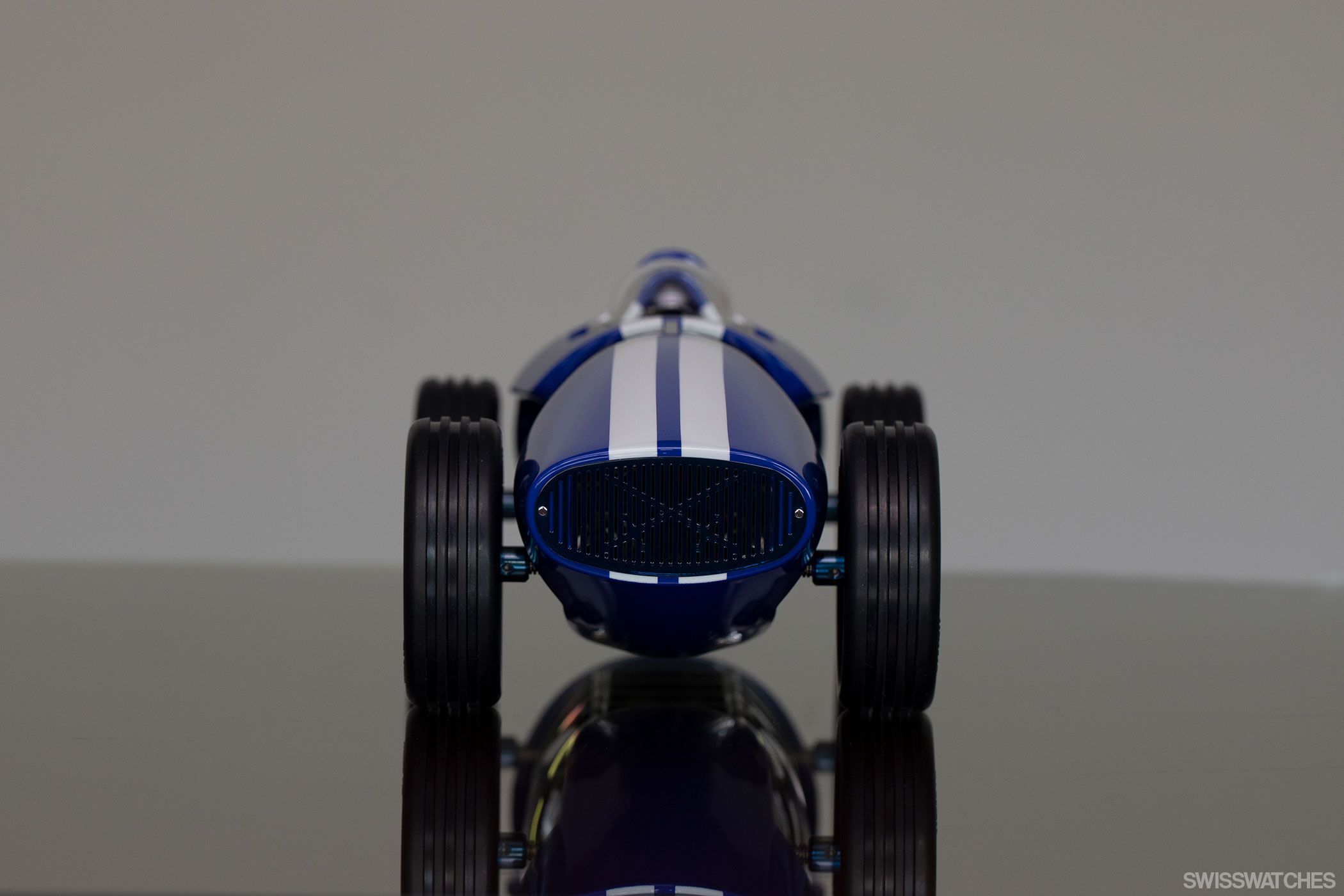
It was clear that the single-seater could only wear one team colour in this case, namely the Bucherer Blue of the Lucerne–based jeweller – and that from the chassis to the spoke rims. The latter is the most obvious difference from the blue-and-white predecessor Time Fast, which rolled into the jeweller’s displays on classic chrome rims. Interestingly, the in-house calibre is wound like a toy race car, namely by pulling the 35,000-euro car clock – or rather its wheels – backwards over a surface. The children of yesterday who became the watch collectors of today inevitably adore it. It’s a shame that you only have to do it once a week.
